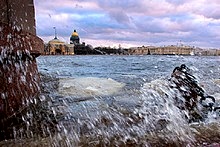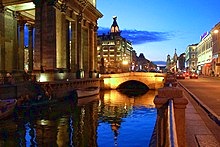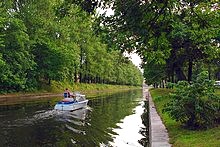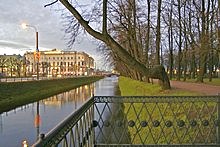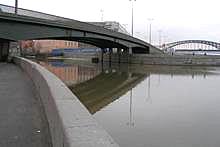Rivers and Canals
Most cities are built beside rivers and many cities are built by the sea, but there are few cities like St. Petersburg where water is as much a part of the city's make-up as brick or stone. Built across the marshlands of the Neva River delta, St. Petersburg is interlaces with around a hundred tributaries and canals with a total length of 300 kilometers and over 800 bridges crossing them. In the city centre, St. Petersburg's famous granite embankments are home to many of the city's grandest buildings, and boat trips along the historic rivers and canals are an essential part of any sightseeing itinerary.
The main river of St. Petersburg, which runs from Lake Ladoga right through the middle of the city into the Gulf of Finland, a broad slow-flowing waterway and major shipping route.
This narrow river encircling St. Petersburg's main central island was one of the first in the city to be encased in granite embankments. These now support some of St. Petersburg's most famous buildings.
For several decades, this river served as the St. Petersburg's city limits Today its banks are lined with numerous palaces and mansions, and some of the city's prettiest bridges.
This narrow and winding channel connects two very different historic areas - the aristocratic center and the impoverished Kolomna District. Major attractions include Church of the Savior on the Spilled Blood.
Running through the south of the centre and connecting the Griboedov Canal and the Moyka and Fontanka Rivers, the Kryukov Canal passes several beautiful buildings, including the Mariinsky Theatre.
This narrow river bisects the Petrograd Side, and is known for its grassy banks where the Convent of St. John of Rila and the Botanical Garden are located.
This short river is the "internal" waterway of Vasilievsky Island. It takes its name from the old Smolenskoe Cemetery through which it flows, and which is one of St. Petersburg's most wildly picturesque spots.
A very short (only 220 meters) but beautifully proportioned and romantic canal flowing below elegant bridges between the buildings of the Hermitage and into Neva River.
This short and straight canal runs between two of St. Petersburg's best-known and most beautiful green spaces, the Field of Mars and Summer Garden.
A small river in a mostly industrial area in the north of the city, the Black River is best known for the fact that the tragic duel of the great poet Alexander Pushkin took place on its banks.
St. Petersburg's second river had a rich history long before the city was founded, with iron age settlements and medieval Swedish fortresses built along its banks.

